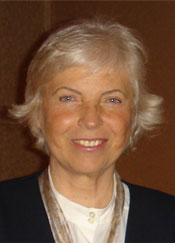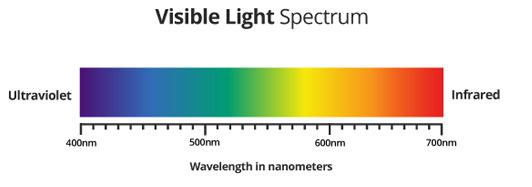
Privacy statement: Your privacy is very important to Us. Our company promises not to disclose your personal information to any external company with out your explicit permission.
Sunlight nourishes plant life by triggering photosynthesis. This process allows plants to take in carbon dioxide from the air along with water and nutrients from the soil. Light is the spark that then transforms these nutrients to nourish all life in the form of chlorophyll, minerals, vitamins and other nutrients. Of course, the myriad of nutrients our plants supply have special healing qualities as well-herbs have a long tradition of use as medicines.
The importance of light to body processes and our health has recently been captured by scientists in the US. They developed a new technique to study what activates the vibrations of nutrients so they can carry out their work within the cell. The scientists discovered the vibration or activity of a protein depends on that protein absorbing light. They revealed that the symphony of life depends on light.
Light is crucial nourishment for our body cells. We absorb light through our eyes and our skin-especially at acupuncture points. Light is a stimulus that charges the mitochondria, the battery for each cell. This creates the natural flow of electricity and energy within the body. Our electrical system, in turn, triggers the chemical reactions-the hormones, vitamins, minerals, enzymes-for our bodies to function.
LED Light for Health
As the 21st Century approached, a series of NASA press releases reported on Dr. Harry Whelan`s research with the latest light technology-LED lights. The research sponsored by NASA, at the Medical College of Wisconsin, focused on the benefits of using light emitting diodes (LEDs) for health.
The research indicated faster healing of severe burns, difficult-to-heal wounds, muscle and tendon sprains, damaged nerves and eye injuries. A press release dated December 2000 announced: [Using powerful light-emitting diodes, or LEDs, originally designed for commercial plant growth research in space, scientists have found a way to help patients here on Earth."
Laser Therapy Paved the way for LED Light
Low level laser light was the forerunner to the advent of LED (light emitting diodes) light. The use of laser light revolutionized areas of medical surgery. For example, surgeons use high power laser light to repair torn retinas and for other delicate eye surgeries. The type of laser light used for surgery differs from that used for therapeutic purposes. The use of therapeutic lasers is referred to as low level laser therapy (LLLT). Therapeutic laser light is used to speed healing in the field of dentistry, for wound healing, for skin conditions and other applications. An extensive body of research using laser therapy has given direction to LED research.
 Professor Endre Mester
Professor Endre Mester
In 1965, shortly after the first working lasers had been developed, Professor Endre Mester of Semmelweis University in Budapest, Hungary launched pioneering research using laser light. For his first project he wanted to know if lasers might cause cancer. He shaved the hair off the backs of mice-both the group to be treated and the control group. The treated group did not develop cancer but to his surprise the hair on their backs grew more quickly. Research on the healing effects of low level laser therapy was launched!
In 1971, Professor Mester`s first paper was published reporting that laser light was effective for healing wounds. It became a family affair when two sons joined him in his research. By 1984, more than 1,300 patients-with wounds or ulcers that wouldn`t heal using conventional medicine and plastic surgery-had been healed using low level laser therapy.
Meanwhile, the former USSR was also making progress with low level laser therapy research. During their war with Afghanistan in the 1980s, Soviet soldiers benefited from the use of low level laser therapy to speed wound healing.
This research provided a springboard for LED research. A NASA press release in the US heralded the news: [The near-infrared light emitted by these LEDs seems to be perfect for increasing energy inside cells. This means whether you`re on Earth in a hospital, working in a submarine under the sea or on your way to Mars inside a spaceship, the LEDs boost energy to the cells and accelerate healing."
 Professor Tiina Karu
Professor Tiina Karu
A researcher based in Russia, Professor Tiina Karu, is considered a world-leader in both low level laser and LED research. Karu states that LED light is [- now used widely and successfully in clinical practice." She also states that LEDs are equivalent to low level lasers except possibly in [deeper tissue layers."
Dr. Harry Whelan, head of the NASA-sponsored research, stated: [NASA developed LEDs to offer an effective alternative to lasers."
The use of laser devices is more in the realm of health professionals as it takes training to be used safely. In contrast, LED light technology can readily be used for personal use in the home and has the advantage of being able to treat a larger area. Since the 1990s, the use of LED technology in research, in clinical practice, and by consumers has established both the safety and effectiveness of LED light.
LED Light and Color
Led Light Therapy units will often describe the color in terms of the wavelength of the LEDs. The wavelength is measured in nanometers (nm). The human eye sees wavelengths as colors.
The following chart shows the range of wavelengths (colors) in the visible light spectrum. Visible light ranges from the violets at about 380 nanometers to the deepest reds at about 750 nanometers.

There is also light that is invisible. On the violet end of the spectrum, we have ultraviolet light-less than 380 nanometers. At the red end of the spectrum, we have infrared light-greater than 750 nanometers. In both cases these wavelengths are outside the range of human sight and therefore they are invisible to us.
LEDs, to date, are not being designed for their healing benefits. They are used in the industrial manufacturing industry and have been built for this sector. Researchers have used currently available LEDs for their medical studies. Research protocols must be precise so the reports describe the LEDs in terms of their nanometers. As an example, researchers cannot simply say their research used red LEDs-the LEDs must be described using their exact wavelength in nanometers. For example, 635 nm LEDs, in the red spectrum, are very common and have been used in medical research. When 670 nm LEDs became available, also in the red spectrum, research was done with this wavelength. Both indicated effectiveness for healing.
Unfortunately, some manufacturers use nanometers-a measurement used in research-as a marketing tool to explain why their particular unit is superior. In addition to 635 nm and 670 nm, LED light therapy research has shown that several wavelengths of red, as well as other colors, are effective for healing.10 When a particular nanometer is used in research it does not mean it is the only nanometer to have healing benefits.
Keep in mind, we are not aware of any scientific studies that show any one wavelength or color is not effective. The long history of using color for healing tells us that there are therapeutic benefits to all wavelengths of light. In other words, all colors or nanometers have healing benefits. Eventually, scientific research will experiment with more and more wavelengths of color, to catch up with the knowledge amassed through traditional color therapy.
LET'S GET IN TOUCH

Privacy statement: Your privacy is very important to Us. Our company promises not to disclose your personal information to any external company with out your explicit permission.

Fill in more information so that we can get in touch with you faster
Privacy statement: Your privacy is very important to Us. Our company promises not to disclose your personal information to any external company with out your explicit permission.